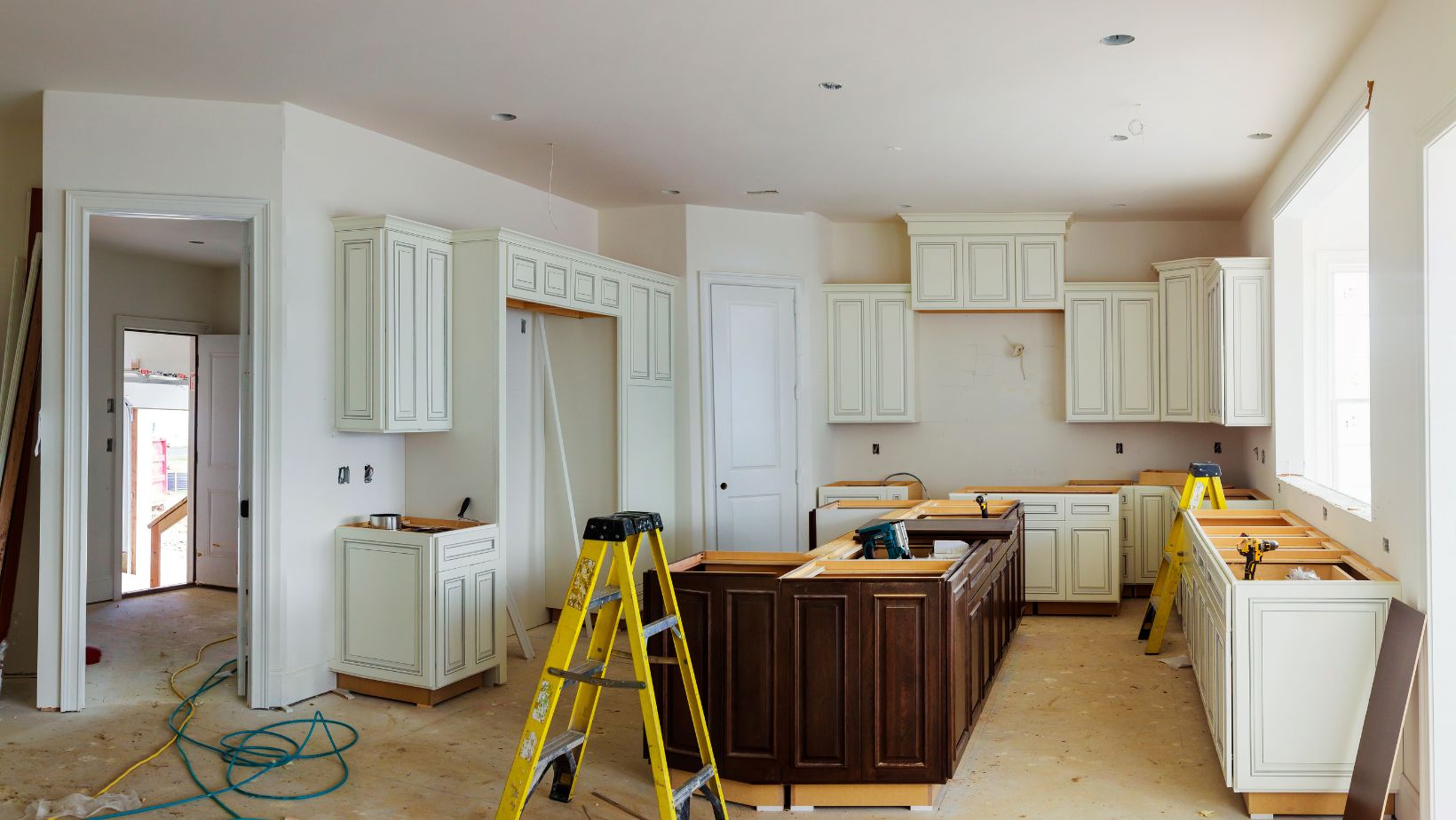Navigating the world of home insurance can feel overwhelming. With so many options and terms to understand, it’s easy to get lost in the details. Yet, having the right coverage is essential for protecting one of life’s biggest investments—your home.
This guide breaks down the complexities of home insurance, offering clear insights into what policies cover and how to choose the right plan. Whether you’re a first-time buyer or looking to reassess your current coverage, understanding the ins and outs of home insurance will empower you to make informed decisions that safeguard your property and peace of mind.
Table of Contents
ToggleWhat Is Home Insurance?
Home insurance is a type of property insurance that covers private homes. It provides financial protection against damages to the home structure and personal belongings due to various risks. Home insurance policies typically include several essential components.
Common Coverage Types
- Dwelling Coverage: This covers damages to the home structure from fire, wind, hail, and other perils.
- Personal Property Coverage: This protects personal belongings, such as furniture and electronics, from theft or damage.
- Liability Coverage: This offers protection against claims of injury or property damage to others that occur on the insured property.
- Additional Living Expenses: This covers costs for temporary housing and living expenses if the home becomes uninhabitable due to a covered event.
Policy Options
Homeowners may choose between different policy types, including:
- HO-1 Basic Form: Offers limited coverage for specific perils.
- HO-2 Broad Form: Provides more coverage for both dwelling and personal property.
- HO-3 Special Form: Covers the home on an open-perils basis while specifying the perils covered for personal property.
- HO-5 Comprehensive Form: Offers extensive coverage for both dwelling and personal belongings on an open-perils basis.
Importance of Home Insurance
Home insurance safeguards against potential financial losses, ensuring peace of mind for homeowners. It can cover repair costs, replacement of damaged items, and even legal fees arising from lawsuits. Many mortgage lenders require homeowners to maintain insurance as a condition for financing, making it a crucial aspect of homeownership.
Considerations When Choosing a Policy
- Home Value: Determine the rebuilding cost of the home.
- Location Risks: Evaluate local risks like floods or earthquakes that may require additional coverage.
- Deductibles: Understand out-of-pocket costs before the insurance coverage applies.
- Discounts: Look for potential discounts based on safety features, multiple policies, or claims history.
Types of Home Insurance Policies

Home insurance policies come in various forms, each offering different levels of protection. Understanding these types helps homeowners select the most suitable coverage for their needs.
HO-1: Basic Form
HO-1, or Basic Form, provides minimal coverage. This policy covers specific perils like fire, lightning, and theft. Limited in scope, it often lacks protection for personal belongings and liability.
HO-2: Broad Form
HO-2, or Broad Form, offers broader coverage than HO-1. It includes protection against more perils, such as falling objects and water damage from plumbing issues. This policy covers the home structure and personal property within it.
HO-3: Special Form
HO-3, or Special Form, represents the most common home insurance policy. This comprehensive plan protects the home against a wide range of risks, with open perils coverage for the dwelling and named perils for personal property. This allows greater flexibility in coverage.
HO-4: Tenants Form
HO-4, or Tenants Form, caters to renters. This policy covers personal belongings against perils like theft, vandalism, and certain natural disasters. It does not cover the physical structure, as that is typically the landlord’s responsibility.
HO-6: Condo Form
HO-6, or Condo Form, is designed for condo owners. It provides coverage for personal property and structural improvements within the unit. HO-6 policies often include liability protection as well.
HO-7: Mobile Home Form
HO-7, or Mobile Home Form, offers specific coverage for mobile or manufactured homes. It protects against perils like fire, theft, and certain natural disasters. This policy also includes liability coverage, addressing the unique risks associated with mobile homes.
Factors Affecting Home Insurance Premiums
Home insurance premiums vary based on multiple factors. Understanding these influences helps homeowners make informed decisions when selecting coverage.
Location of the Home
Location significantly impacts home insurance premiums. Higher-risk areas, prone to natural disasters like floods or earthquakes, lead to elevated premiums. Urban areas typically face theft and vandalism concerns, which can also increase costs. Conversely, homes in safer, low-risk communities or regions with favorable weather patterns often benefit from lower premiums.
Home Features and Safety Measures
Home features directly affect premiums. Houses with updated electrical systems, plumbing, and roofs often attract lower rates due to reduced risk of damage. Safety measures, such as security systems, smoke detectors, and fire alarms, contribute to potential discounts. Additionally, homes built with disaster-resistant materials may receive lower premiums given their resilience against various risks.
Credit Score and Claims History
Credit scores influence home insurance premiums. Insurers often view higher credit scores as indicative of responsible behavior, leading to lower rates. Conversely, poor credit scores may result in higher premiums. Claims history is also crucial; frequent claims can flag a homeowner as a higher risk, prompting insurance providers to increase rates. Maintaining a positive claims history contributes to more favorable insurance costs.
Tips for Choosing the Right Home Insurance
Choosing the right home insurance involves several key considerations. By assessing personal needs and comparing options, homeowners can find a suitable policy that offers peace of mind.
Assessing Your Coverage Needs
Assessing coverage needs initiates with determining the home’s value, including both the structure and personal belongings. Homeowners should calculate replacement costs to ensure adequate coverage against damages or total loss. Evaluating risks specific to the home’s location, such as susceptibility to floods or earthquakes, influences coverage decisions. Additionally, considering personal liability protection is crucial; it safeguards against lawsuits arising from accidents on the property. Homeowners may also explore optional endorsements for valuable items, such as jewelry or collectibles, that may require additional coverage.
Comparing Quotes from Different Insurers
Comparing quotes from various insurers helps homeowners identify competitive rates and policy features. Homeowners should obtain quotes from at least three different providers to understand the marketplace. Each quote should detail coverage limits, deductibles, and premiums to allow for an apples-to-apples comparison. Evaluating customer service ratings, claims processes, and financial stability of insurers is equally essential. Homeowners can use online comparison tools or consult independent agents to streamline this process. Taking the time to analyze different options ensures a well-informed purchase decision that meets coverage needs at a reasonable cost.
Common Home Insurance Myths
Home insurance often faces misconceptions that can influence homeowners’ decisions. It’s essential to address these myths for clarity.
- Home insurance covers everything: Many believe all damages and incidents are covered. Typically, policies exclude specific events like floods or earthquakes. Homeowners should review their policy details for excluded perils.
- Home insurance is just for natural disasters: Some think it only protects against natural disasters. Home insurance also covers theft, vandalism, and accidents. Proper understanding is crucial for adequate coverage.
- Renters don’t need insurance: It’s often assumed that only homeowners require insurance. Renters benefit from coverage that protects personal belongings. Renters insurance provides financial security against potential losses.
- Home insurance premiums don’t change: Some believe that once set, insurance costs remain the same. Factors, such as claims history, location, and home upgrades, can affect premium rates. Regular policy review ensures appropriate coverage and cost management.
- Insurance covers market value: Many assume that insurance pays based on the home’s market value. Policies generally cover the cost to rebuild or repair, which may differ from market values. Homeowners should assess replacement costs accurately.
- All belongings are automatically covered: There’s a belief that personal possessions are fully covered under home insurance. Policies often have limits on high-value items, such as jewelry and electronics. Endorsements can expand coverage limits for valuable possessions.
- Insurance fraud is common and harmless: Some think minor exaggerations on claims are acceptable. Fraudulent claims can lead to severe consequences, including policy cancellation and legal repercussions. Honesty in claims is essential.
- All home insurance policies are the same: It’s a myth that all policies provide equal coverage. Policies vary significantly in terms and conditions. Homeowners must compare options to find the best fit for their needs.
Understanding these myths clarifies home insurance, helping homeowners make informed decisions.
Home insurance is a vital safeguard for homeowners looking to protect their investment. By understanding the various policy types and coverage options available, individuals can make informed choices that fit their unique needs.
Evaluating factors like home value, location risks, and personal liability ensures a tailored approach to coverage. Homeowners should also be aware of common myths that can cloud judgment when selecting insurance.
With thorough research and careful consideration of quotes, they can find the right policy at a competitive rate. Ultimately, securing the right home insurance not only provides peace of mind but also financial security against unexpected events.







